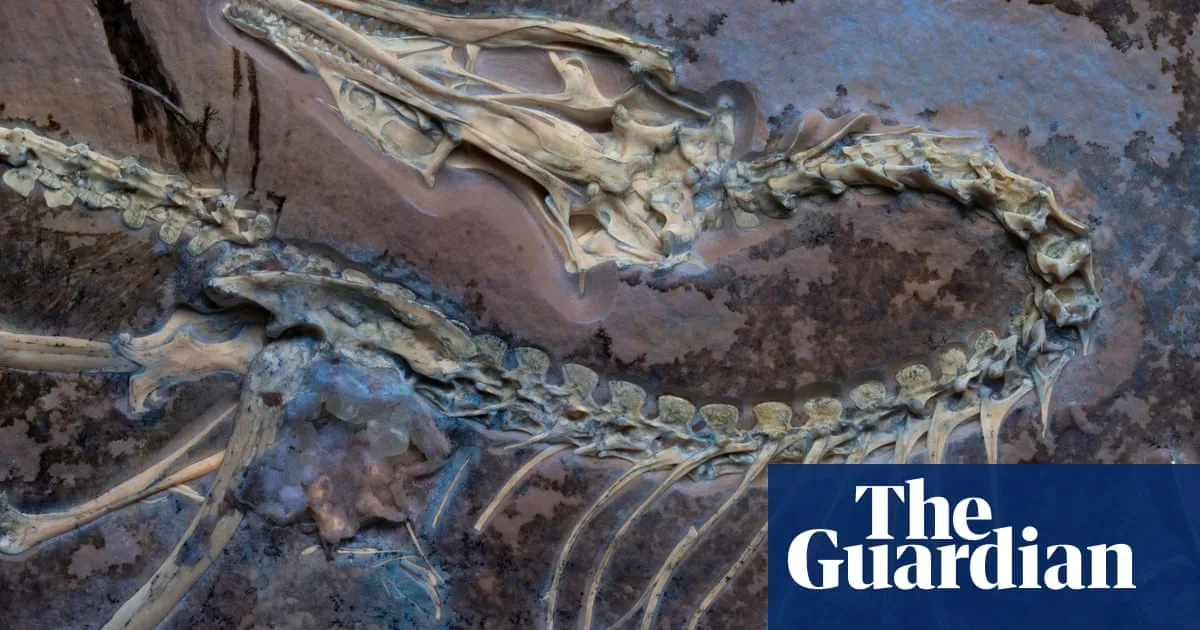
An exquisitely preserved Archaeopteryx fossil has provided groundbreaking insights into how the earliest birds took flight approximately 150 million years ago. This particular fossil marks the first instance where scientists have successfully identified specialized wing feathers that would have facilitated flight. The discovery of these tertial feathers, located on the upper arm bone, creates a smooth aerodynamic line from the wing to the body. This feature is absent in feathered, flightless dinosaurs that coexisted with these early birds, indicating a significant evolutionary change that was essential for lift-off.
Dr. Jingmai O’Connor, an associate curator of fossil reptiles at the Field Museum in Chicago and the lead analyst of this study, stated, “Archaeopteryx isn’t the first dinosaur to have feathers or the first to have ‘wings’. However, we believe it is the earliest known dinosaur capable of utilizing its feathers for flight.” She further explained that the absence of these feathers in closely related feathered dinosaurs suggests that those species could not achieve flight, highlighting the unique adaptations of the Archaeopteryx.
The first Archaeopteryx fossil was discovered 160 years ago in a German quarry, immediately gaining attention as a candidate for the earliest known bird due to its visible feathers. Interestingly, this genus of ancient birds also retained several dinosaur-like features, such as sharp-toothed jaws, a long bony tail, and hyperextensible second toes, often referred to as the “killing claw.” The recent Chicago specimen was in private ownership until its acquisition by the Field Museum in 2022.
A critical debate surrounding the adaptations required for flight in Archaeopteryx has emerged among scientists. Previous observations revealed that, unlike feathered dinosaurs, Archaeopteryx possessed asymmetric feathers—where one side of the central shaft is wider than the other. This characteristic is crucial for generating thrust during flight, a feature also present in modern birds. The latest findings indicate a second significant evolutionary adaptation necessary for flight.
“Compared to most living birds, Archaeopteryx has a notably long upper arm bone,” said Dr. O’Connor. “This extended upper arm can create a gap between the long primary and secondary feathers of the wing and the rest of the body. If air flows through that gap, it disrupts the lift being generated, making flight impossible.”
Dr. John Nudds, a senior lecturer in palaeontology at the University of Manchester who was not involved in this research, emphasized the importance of this discovery: “This is the first time these feathers have been observed. The new feathers identified in this beautifully preserved specimen, in conjunction with the asymmetric feathers, confirm that Archaeopteryx had the capability to fly.”
The fossil’s tiny, hollow bones and tissues match the color of the surrounding hard limestone, making detailed analysis a challenge. The team at the Field Museum utilized cutting-edge CT scanning and UV light techniques to delineate the fossil’s boundaries. They carefully chiseled away the limestone with sub-millimetre precision over the course of more than a year, revealing a more comprehensive picture of this important specimen.
“Our specimen is the first Archaeopteryx that has been preserved and prepared in such a way that we can observe its long tertial feathers,” concluded Dr. O’Connor, highlighting the significance of this discovery in understanding the evolution of flight in early birds.